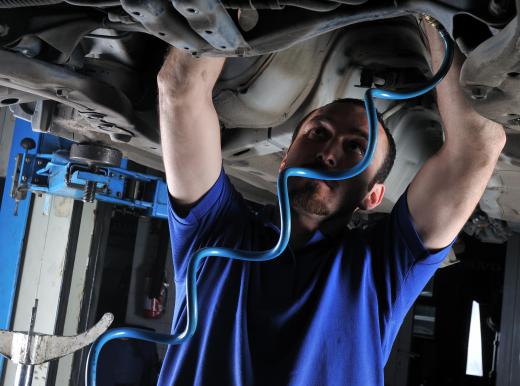An air chisel, or air hammer, is a pneumatic tool that consists of a ram that is capable of repeatedly extending a metal insert. Air hammers are typically capable of accepting a variety of inserts, such as punches, pickle forks, and differently shaped chisels. When equipped with an actual chisel insert, these devices can be used to quickly accomplish virtually any task a regular chisel can be used for. The same tool can also be used for many other jobs if an insert other than a chisel is installed. Some type of collar or retainer clip is typically attached to the open end of the air chisel to keep the insert from falling out during use.
Air hammers bear a superficial resemblance to guns, in that they consist of a handle, trigger, and barrel. An inlet connection is typically located on the handle, and a source of compressed air must be attached to it for the tool to function. The compressed air is allowed to enter the barrel of the mechanism when the trigger is pulled. A piston located in the barrel is then rapidly activated, causing a repetitive motion that gives the air hammer its name. When a tool is inserted into the barrel, it is thrust forward repeatedly to create a chiseling, hammering, or splitting action.

Since air hammers are commonly used with chisel inserts, they are often referred to as air chisels. The shank of an insert that is designed to be used with a particular air chisel typically has a certain diameter and length to ensure proper operation, and a shank that is too small or too short can fall out during use. Air chisel shanks typically have a raised edge that runs around the circumference as well that can allow the tool to be locked into place with a retainer clip, collar, or quick change chuck. The chisels that these devices use are created especially for pneumatic applications and can be damaged if they are hammered on manually.

The power offered by an air chisel can be used to perform jobs that would be difficult, time consuming, or impossible to do manually. Air chisels can be used to split sheet metal, exhaust pipes, and automotive body panels. Special chisels with hooked edges can be used to cut a clean line through metal. Straight chisels can also be used to shear off frozen bolts, and other tool inserts can accomplish a variety of different jobs. Many air hammer sets come complete with a number of different chisels and other inserts.
